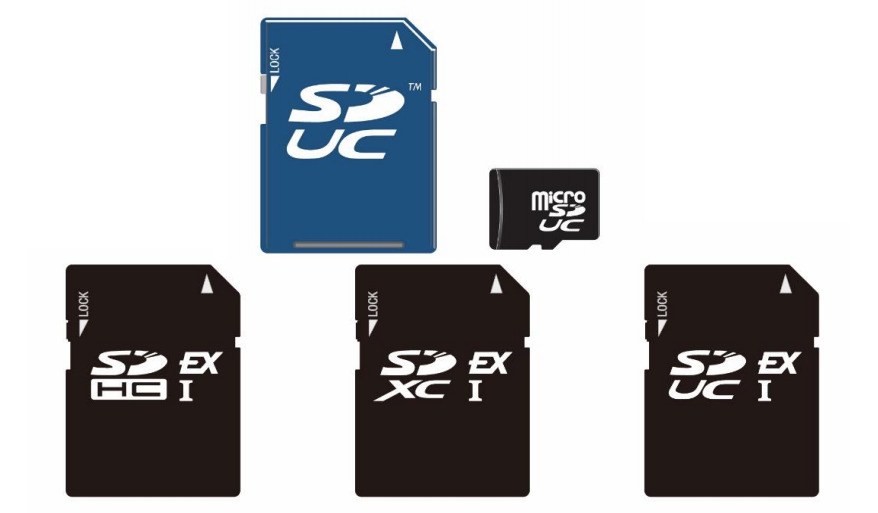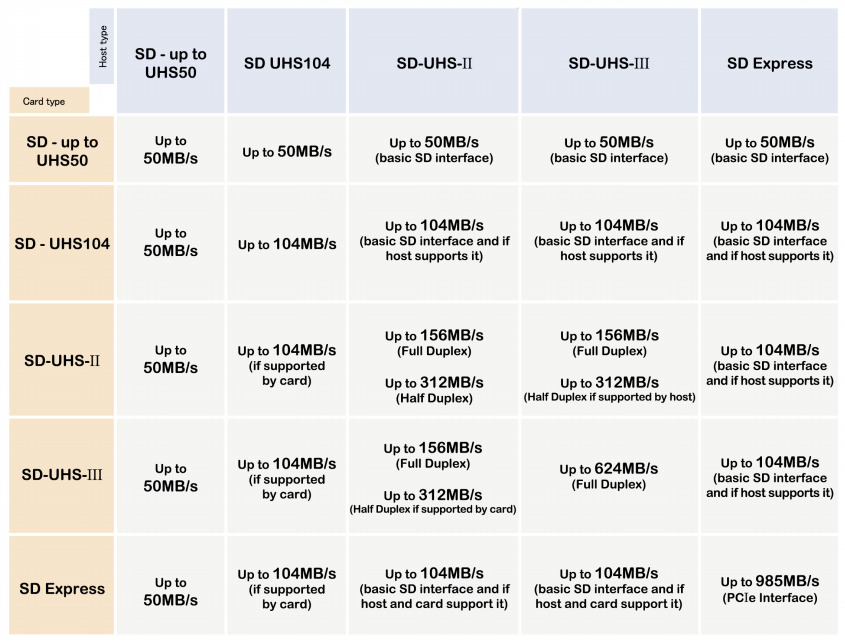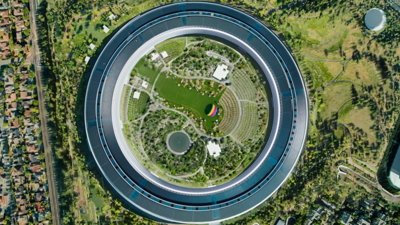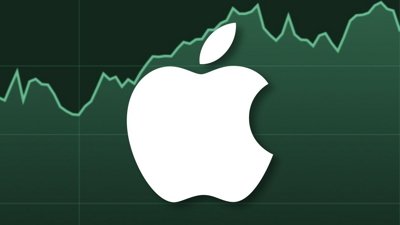The SD Association has published a new version 7.0 specification for SD cards, with updates in two areas significantly increasing the potential capacity of the future memory cards, as well as boosting the data transfer rates to almost 1 gigabyte per second.
The first major update is called "SD Express," which introduces PCIe 3.0 and NVMe 1.3 interface support to speed up connectivity between the card's memory and the device holding the card. According to the specifications, the card will be capable of transfer speeds of up to 985 megabytes per second, though it is unclear if this will apply to both read and write speeds, or just for reading data.
This high-speed connectivity will be possible using a PCIe interface, but cards using the specification will still be usable with older card readers. As SD Express includes support for SD UHS-I interfaces, but crucially not UHS-II nor UHS-III, it will offer up to 104 megabyte-per-second speeds in legacy readers that support these legacy interfaces.
The other update, "SD Ultra Capacity," is an expansion of available storage. While current-generation SD cards can offer a maximum capacity of 2 terabytes, the new standard advises Ultra Capacity cards can offer up to 128 terabytes of storage.
According to the SD Association, SD Express will be geared towards those needing to move large amounts of data, with applications including capturing super slow motion video, RAW continuous burst modes, 8K video capture and playback, 360-degree videos, gaming, automotive, and Internet of Things devices.
"With SD Express, we're offering an entirely new level of memory card with faster protocols turning cards into a removable SSD," said SD Association president Hiroyuki Sakamoto. "SD 7.0 delivers revolutionary innovations to anticipate the needs of forthcoming devices and content rich and speed hungry applications."
While the announcement of the specification is promising, it will be some time before the benefits will be seen by the general public. Not only will SD cards using the standard need to reach the market, it will also require compatible card readers to be available in order to hit the highest speeds.
Consumers are also likely to encounter memory cards on the market offering only one of the two updates in the future. The SD Association's example logos for cards using the specification indicate if they have SDUC or SD Express, so it is plausible a high-capacity card could choose to enable the more commonplace UHS-II and UHS-III instead of SD Express.
 Malcolm Owen
Malcolm Owen


-m.jpg)






 Oliver Haslam
Oliver Haslam
 Thomas Sibilly
Thomas Sibilly
 Marko Zivkovic
Marko Zivkovic

 Wesley Hilliard
Wesley Hilliard

 Andrew Orr
Andrew Orr



-m.jpg)






24 Comments
If such a card is capable of 128 terabytes, that will make continuous HD recording everywhere commonplace.
Nice tech however since the iPhone never featured an SD-Card slot and newer macs no longer have an SD-Card slot this article sadly seems little relevant to apple users.